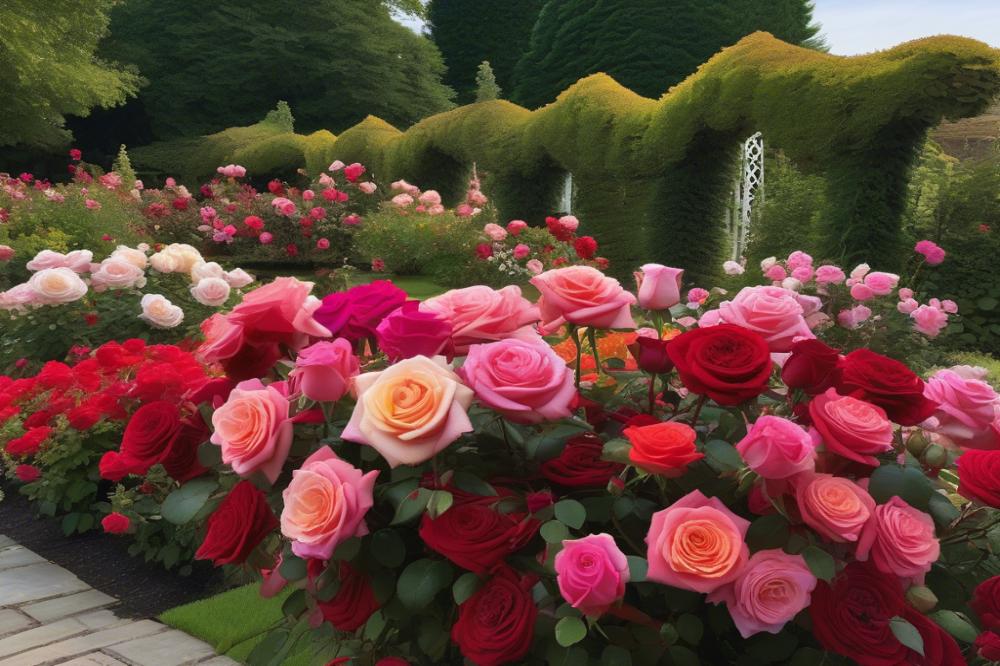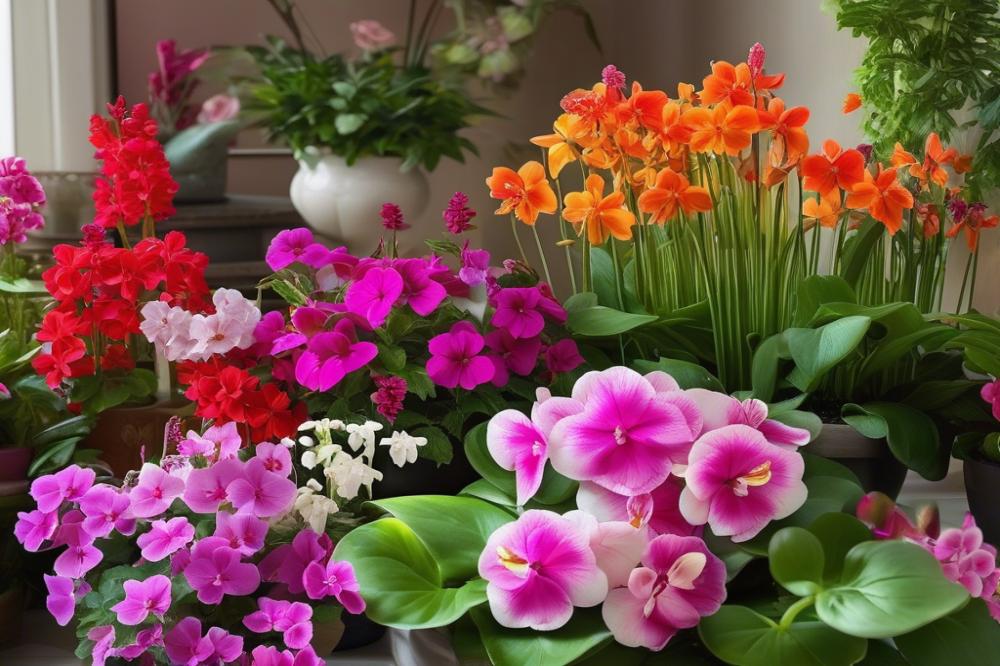Choosing the Right Rose Type for Your Garden
Roses can transform any garden into a vibrant and inviting space. Selecting the appropriate rose variety is crucial for achieving your desired aesthetic. Not every rose thrives in every environment. When homeowners understand the unique features of different roses, they set themselves up for success.
An array of rose types exists, each offering distinct benefits and characteristics. Among them are perennial roses, which provide enduring beauty year after year, and climbing roses that can gracefully adorn fences and trellises. Shrub roses bring structure and can serve as attractive hedges. Another popular choice includes hybrid teas, known for their stunning blooms and elegant appearance.
Colors play a significant role in landscaping. Deep reds evoke passion, while soft pinks create a sense of calm. Fragrance can enhance the entire outdoor experience; some varieties are notably fragrant, adding another layer to garden enjoyment. Thoughtful disease resistance also matters. Choosing disease-resistant roses means less maintenance and more time to enjoy the garden.
Consider how often each variety blooms. Some roses offer seasonal blooms, providing a burst of color when you need it most. Care tips for maintaining these plants vary widely between types. By doing a little research, anyone can find roses that fit their care routines and garden style.
In summary, understanding the different aspects of rose types will greatly benefit gardeners. Making a well-informed choice not only beautifies the landscape but also ensures a flourishing garden.
Understanding Rose Types

When planning your garden, it’s essential to get familiar with the different types of roses available. Choosing the right kind can greatly influence your garden’s look and feel. So, let’s break down some common types and their characteristics.
Perennial Roses
Perennial roses are a fantastic option for those who want reliable blooms year after year. They come back with vigor every spring, providing a consistent show. This type often boasts beautiful colors and fragrances. With proper care tips, they can thrive in your garden, enhancing your landscaping. Their ability to resist diseases makes them a popular choice. Expect vibrant seasonal blooms that can brighten any corner of your yard.
Climbing Roses
Climbing roses bring a dramatic flair to your garden. These roses can scale fences, trellises, and walls, making them ideal for vertical gardening. Their long canes need support, but the reward is stunning displays of clusters. The variety in color selection is remarkable, allowing for creativity in design. They can also introduce delightful fragrances to outdoor spaces. When choosing this type, think about how they blend with your existing garden elements.
Shrub Roses
Shrub roses are perfect for those who desire a more natural, informal look. These roses have a bushy growth habit, making them great for creating hedges or borders. They are hardy and versatile, adapting well to various gardening styles. Different shrub roses have unique features, from diverse colors to pleasing scents. Keep an eye on disease resistance for a thriving garden. Their ability to bloom throughout the season can keep your garden lively.
Hybrid Teas
Hybrid teas are a classic choice, well-loved for their elegant blooms. Each flower features long stems, making them excellent for cut arrangements. These roses come in various colors, ensuring you find the perfect shade for your aesthetic. Their fragrance often draws people in, making these roses a popular focal point. Regular care tips improve their growth, promoting abundant flowering. Their upright growth habit allows them to stand out beautifully in any garden setting.
Matching Rose Types to Your garden style

How to Evaluate Your Garden Style
Understanding your garden style is a critical first step. Take a moment to observe your outdoor space. Does it feel formal and structured, or is it more relaxed and free-flowing? Consider the colors already present. Are they vibrant, muted, or a mix? Your preferences in landscape design will play a huge role in choosing the right plants. Think about how much time you can spend on upkeep. Some styles require more care than others.
Suggestions for Landscape Designs that Complement Specific Rose Types
When designing your space, think about how different types can enhance your overall aesthetic. Shrub roses work well in informal gardens. They can create a lush backdrop filled with color and fragrance. If you favor climbing roses, let them cover arbors or fences. They add height and charm, making your garden feel more inviting. Hybrid teas offer the perfect touch for a formal look. Their impressive blooms make a strong statement. Pair them with neatly trimmed hedges for an elegant vibe.
Examples of Garden Styles
A formal garden often features geometric shapes and symmetry. Plant hybrid teas in neatly aligned rows. Their stunning blooms and disease resistance will impress anyone who visits. In contrast, a cottage garden welcomes a more relaxed approach. Plant perennial roses alongside herbs and wildflowers. This creates a whimsical feel. Climbing varieties can drape over fences, adding character to this soothing environment.
For a contemporary style, consider sleek lines and modern designs. Utilize shrub roses in minimalist beds to keep things clean and fresh. Focus on color selection that complements your home’s exterior. Seasonal blooms and unique plant combinations can enhance your outdoor living area. Remember to think about fragrance, too. Scented roses can draw people into the space, creating an inviting atmosphere.
By analyzing your garden’s layout and style, you can make informed choices. Every detail matters, from the type of roses to the way they interact with other plants. Choose wisely to achieve the garden of your dreams.
Considerations for Color and Fragrance

Selecting Rose Types Based on Color Preferences
Choosing roses for your garden starts with color selection. Think about what hues resonate with you. Do you prefer soft pastels or vibrant reds and yellows? These shades can dramatically change the vibe of your landscaping. Shrub roses often come in a variety of colors and offer great versatility. Hybrid teas also present stunning choices, perfect for formal gardens. Climbing roses create beautiful focal points, especially against neutral walls. When you combine different colors, the overall effect can be captivating.
Impact of Fragrance on Garden Experience
Fragrance elevates the garden experience. When you walk through a space filled with scented blooms, it enhances your connection to nature. Some roses, like certain climbing varieties, release strong aromas that draw you in. Consider incorporating perennial roses since they often have delightful scents as well. Care tips suggest choosing fragrant varieties to create a sensory-rich environment. Including roses with different fragrance profiles can make your outdoor space unforgettable.
How to Create Harmonious Color Schemes with Different Rose Types
Creating a cohesive color scheme involves strategic planning. Start by picking a dominant color. Adding complementary shades will pull everything together. For example, pairing white or soft pink roses with deeper reds can be stunning. Think about using climbing roses to climb over arches or trellises, adding height and interest. Mixing shrub roses throughout the garden can form a lovely backdrop. This not only improves aesthetics but also promotes disease resistance, as diverse plantings can prevent outbreaks. Seasonal blooms can result from selecting varieties that flower at different times, ensuring there’s something beautiful year-round. Use color and fragrance wisely to craft an enchanting garden that reflects your style.
Evaluating Disease Resistance and Care Tips

Choosing roses for your garden involves more than just picking pretty blooms. Disease resistance should play a crucial role in your selection process. Healthy plants bring joy, while sick ones cause frustration. Perennial roses often show better resistance to common ailments. This trait leads to a more vibrant garden with less hassle for you.
Care Tips for Various Roses
Caring for climbing roses requires special attention. These plants thrive on support structures. Regular pruning helps ensure they maintain shape and produce abundant blooms. In contrast, shrub roses need minimal fuss. They flourish with a simple layer of mulch and occasional trimming. Hybrid teas might demand more. They prefer consistent watering and a balanced fertilizer regimen.
Seasonal Blooms and Maintenance for Long-Lasting Beauty
Planning for seasonal blooms can significantly enhance your landscape. Pay attention to color selection and fragrance when determining which roses to plant. Some varieties bloom once a year, while others offer continuous flowers throughout the growing season. Proper maintenance, such as deadheading spent blooms, encourages new growth. Regular inspections are necessary to catch any disease early. The right care at the right time will help your garden stay beautiful and healthy.
Additional Factors in Rose Selection
Considering climate is essential when choosing roses for your garden. Some varieties thrive in warm areas, while others prefer cooler environments. Rainy regions might welcome hybrid teas that resist moisture-related diseases. Meanwhile, sunny spots are perfect for many perennial roses, which bloom vibrantly under direct sunlight.
Space matters as well. Climbing roses can take over a trellis or wall, providing beautiful vertical accents. However, these require a bit more maintenance and support. On the other hand, shrub roses are compact. They fit snugly into smaller areas, making them suitable for quaint gardens.
How you incorporate new plants into existing gardens can greatly affect your design. Mixing darker shades of roses with lighter ones adds depth and interest. Fragrance also enhances this effect, inviting visitors to stop and enjoy your garden. Additionally, the seasonal blooms of different roses can create a dynamic view throughout the year. Suddenly, your previously static garden transforms into a lively, colorful display.
When planning landscape designs, remember to consider disease resistance. Certain roses offer better resilience, helping them withstand local pests and diseases. This means less time spent on care tips, ensuring your roses flourish with minimal effort. Lastly, color selection should align with your overall aesthetic. Choose hues that complement existing plants, creating a cohesive and harmonious environment.
Wrapping Up Your Rose Selection Journey
Choosing the right variety of roses for your garden can truly transform your outdoor space. Think about the style of your garden and how roses can complement it. Each type offers something different, whether you’re aiming for a classic, modern, or romantic feel. Consider factors like size, color, and bloom time. This approach helps create a harmonious look that enhances your overall landscaping.
Don’t hesitate to experiment with different options. Mixing varieties can create a dynamic and interesting flower display. You might be surprised at how well different colors and shapes can blend together. The excitement of discovering new favorites adds to the joy of gardening.
Incorporating perennial roses can provide lasting beauty. They offer reliable blooms year after year, making them an excellent choice for any garden enthusiast. Remember, the beauty of a garden lies in its diversity and personal touch. Let your creativity shine through as you select roses that speak to your heart.
Final thoughts? Embrace the opportunity to enhance your garden’s beauty with carefully chosen flowers. Roses can be a stunning focal point or a subtle background that enriches your outdoor experience. With thoughtful selection and a willingness to try new things, your rose garden will flourish.



